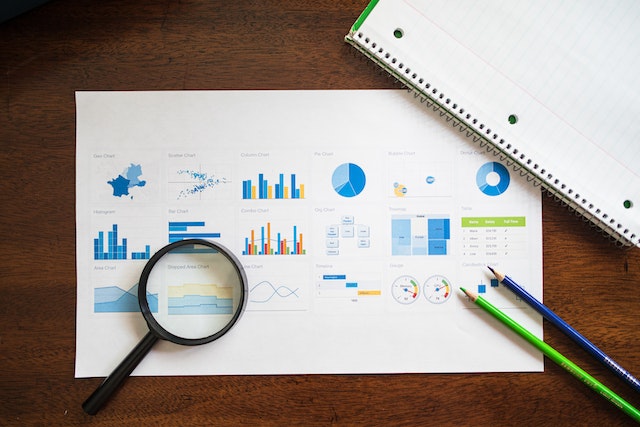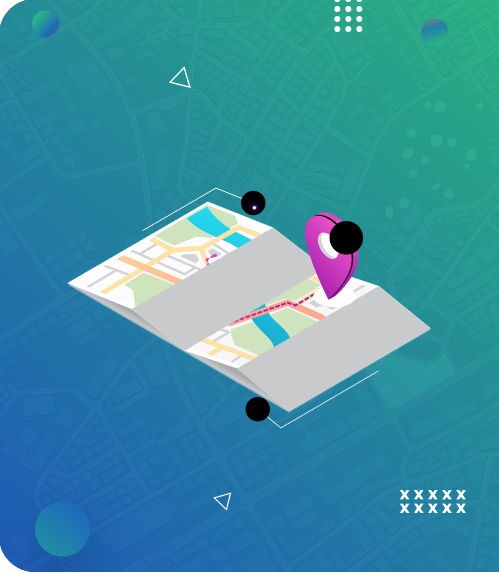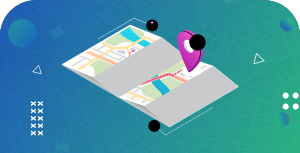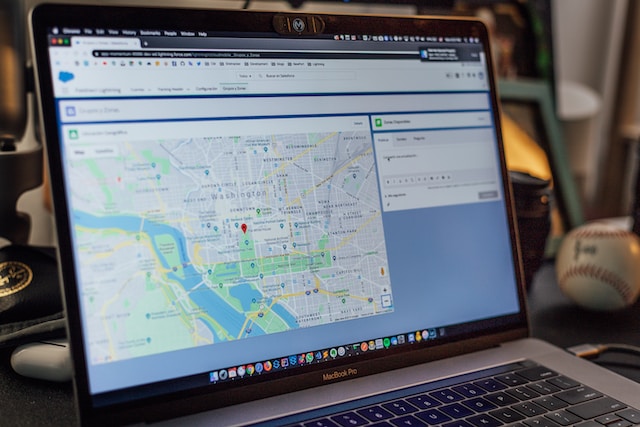Effective data visualization is vital in interpreting large and complex datasets in today’s data-driven world. Businesses often face vast amounts of data. Sometimes, these sets of data can be challenging to deal with. However, thanks to various data visualization techniques, they can present this data in a visually appealing manner for easy understanding.
Employing these techniques, whether basic or advanced, provides a quick and intuitive way to convey complex data. As a result, it facilitates efficient decision-making and fosters better comprehension of the represented data.
This guide closely examines the data visualization techniques you can employ in your business. It also considers helpful tips that can assist you in discovering the best visualization methods. First, let’s discuss what data visualization entails.

- What Is Data Visualization: The Key To Understanding Data Visualization Techniques
- Data Visualization Technique Examples
- 3 Basic Data Visualization Techniques That Individuals Can Employ
- 3 Advanced Data Visualization Techniques
- 3 Big Data Visualization Techniques for Businesses and Companies
- 5 Tips To Help You Discover the Best Techniques for Your Professional Needs
- 7 Top Data Visualization Tools That Provide Beneficial Visual Insights
- Mapize: An Excellent Visualization Platform for Your Data Needs
What Is Data Visualization: The Key To Understanding Data Visualization Techniques
Before considering various data visualization techniques, it is vital to answer the question, “What is data visualization?” Data visualization is a dynamic and visually engaging way to represent information and complex data. It helps to identify patterns, trends, and outliers in data via charts, graphs, and maps.
The benefits of effective data visualization are manifold. The human mind can easily draw details from colors and patterns, enabling us to distinguish between different elements. In other words, visualizations grab our attention and help us grasp their message.
Notably, these pieces of information are difficult to comprehend directly from raw data. However, data visualization and its techniques offer purposeful storytelling, capturing our interest and enabling us to internalize details rapidly.
In data analysis, data visualization can help in the pre-processing stage of data mining by identifying incorrect and missing values. Also, it supports variable derivation and selection to determine which variable to include or discard. Understanding data visualization concepts helps us understand how and where to employ data visualization techniques.
Data Visualization Technique Examples
Data visualization techniques are the art and science of transforming complex data sets into intuitive charts, graphs, and interactive visualizations. They provide a gateway to understanding and communicating data effectively, regardless of the industry or field.
Furthermore, they provide a common language that enhances data analysis, interpretation, and collaboration across various teams. Thus, you can unlock insights and make informed decisions with the data. This simplifies its complexity and engages your mind to comprehend represented information.
Without any doubt, data visualization is quite important in today’s world, where we deal with numerous and complex data every day. Common data visualization technique examples include
- Area Maps
- Bar Charts
- Stack Graphs
- Heat Maps
- Histograms
- Pie Charts
- Tree Maps
Depending on your business type or field, you must utilize appropriate data visualization techniques that align with your data. The next section discusses the basic visualization techniques you can use.

3 Basic Data Visualization Techniques That Individuals Can Employ
As mentioned earlier, data visualization uniquely transforms raw data into visually compelling and digestible formats. Suppose you have a few datasets that you want to visualize. In that case, here are three basic data visualization techniques that can assist you in displaying your data with clarity.
- Bar Plots
A bar plot is one of the most versatile yet basic data visualization techniques many use to represent information. This technique requires using rectangular bars to define data variables, with their heights corresponding to an expected value.
Bar plots are effective for comparing discrete data sets or displaying their proportions. They are also intuitive to interpret and provide clear visual information, making them ideal for many data presentations. - Pie Charts
Pie charts are another popular visualization technique to illustrate data proportions. They are simple and easy to interpret, making them more suited for audiences interested in quick analysis. How so?
Pie charts consist of a circle divided into slices, each representing a data variable. The size of each slice corresponds to its proportions. Hence, users can quickly compare the variables and understand the information presented. However, limiting the number of variables on the pie chart is vital to avoid visual objects clutter. - Scatter Plots
A scatter plot is another data visualization technique that displays data for two variables as points on a graph. This technique reveals relationships between these variables and assists in identifying correlations between them.
Scatter plots are effective when dealing with large datasets, as more data points allow for clearer trend identification and correlation. The proximity of data points indicates the strength of the correlation or trend. Interestingly, experts in social sciences, economics, and data analysis utilize it to unveil hidden relationships within datasets.

3 Advanced Data Visualization Techniques
Often, data visualization techniques go beyond basic charts and graphs. While the basic techniques offer clear visual insights, you can employ more sophisticated visualization methods that provide more details.
Thus, advanced data visualization techniques offer innovative ways to explore patterns and multidimensional insights in complex data analysis. Without further ado, let’s consider three popular advanced methods you can employ.
- Heat Maps
A heat map visually represents data using color-coded tiles or grids to indicate the intensity of values in different areas. This advanced visualization technique effectively displays large datasets, revealing patterns, clusters, and trends.
Heat maps are useful across several industries, including geospatial analysis, business analysis, logistics, and healthcare. They help professionals identify anomalies and make data-driven decisions in these fields. Also, they excel in handling dense data that may be challenging to spot using traditional charts and graphs. These dense data include population densities or traffic patterns. - Network Diagrams
Network diagrams are captivating visualization techniques that unveil relationships between qualitative data points. Comprising interconnected nodes and links, they showcase the connections between data points.
They find diverse applications in the business space. Some include illustrating social networks, mapping employee relationships within organizations, and product management. Network diagrams provide valuable insights into complex data structures by visually representing the intricate web. - Tree Maps
A tree map is another advanced visualization tool that displays hierarchical data using nested rectangles. The size and color of each rectangle correspond to the values of the data it represents. Treemaps efficiently utilize space and can display thousands of items simultaneously.
In addition, this technique enables users to explore hierarchical structures, allowing for easy comparison and identification of outliers. Overall, Treemaps offer a visually compelling way to understand complex relationships and proportions within data.

3 Big Data Visualization Techniques for Businesses and Companies
Big data visualization techniques are a powerful way to represent large and complex datasets visually. These techniques range from simple charts to more complex ones like scatter plots and heat maps. By transforming big data into visual object formats, these techniques allow for more straightforward observation and gathering of insights.
The beauty of big data visualization tools lies in their ability to capture large object data accurately. Data analysts benefit from visual representations as it simplifies the process of understanding and interpreting data, saving time and effort.
Also, these techniques are accurate, ensuring their visualizations serve their intended purpose effectively. Considering these attributes, let’s take a look at three data visualization techniques that can unravel big and complex datasets.
- The Line Chart
The line chart, aka line plot, is a familiar and versatile charting tool. It showcases the changes in one variable over another, often with time intervals on one of the axis. Thus, lines connect these data points, thus quickly identifying trends and relationships between two variables. - Histogram
A histogram visually represents data using bars of varying heights. It groups numbers into ranges, with taller bars indicating more data within that range. Histograms display the shape and spread of continuous sample data, allowing for distribution analysis. This enables easy observation and interpretation of data patterns and frequency distribution. - Violin Plots
Violin plots are visualization techniques that combine the features of a box plot and a kernel density plot. They concisely represent data distribution by showing the density of values at different levels. The width of the “violin” shape corresponds to the density, with broader sections indicating higher density.
They enable the exploration of the overall distribution and variations within different categories or groups. This makes them valuable for comparing data distributions and identifying patterns.
5 Tips To Help You Discover the Best Techniques for Your Professional Needs
With numerous techniques to visually represent your data, finding the best ones for your needs can be challenging. However, with some helpful tips, you can discover the best data visualization techniques for your peculiar needs. Therefore, let’s consider five tips to guide you in finding the best from the rest:
- Understand Your Data
Start by comprehending the nature and characteristics of your data by considering variables, dimensions, and relationships. Recognizing that data types respond to specific data visualization techniques is vital. Hence it is vital to employ a visualization technique to visualize your data effectively. - Define Your Objectives
Clearly articulate your objectives and the insights you aim to derive from the data. Also, determine if you need to compare data, identify trends, or showcase proportions. Doing this helps you narrow down the appropriate visualization techniques that fit your goals. - Consider Your Audience
Consider your intended audience’s knowledge, preferences, and visual literacy. Ensure your techniques are accessible and easily understandable for effective data presentation. - Experiment and Iterate
When selecting the best visualization methods, experiment with them. By testing and gathering feedback on multiple techniques, you discover unique ways to represent your data. Above all, it allows you to find the most impactful visualization strategies. - Leverage Technology
Explore data visualization tools and software that offer various techniques. These tools often provide intuitive user interfaces, customization options, and interactive features that enhance visualization. Research and experiment with these tools to find the ones that align with your visualization needs.

7 Top Data Visualization Tools That Provide Beneficial Visual Insights
Understanding and interpreting vast amounts of information is essential for businesses and individuals in this modern age. This is where data visualization tools come into play. They enable the transformation of complex data into visually appealing and easy-to-understand representations.
Of course, data visualization techniques form the backbone of these tools. Finding the best data visualization tools can be challenging. Here are seven top tools you can utilize to obtain optimal results:
- Tableau
- Microsoft Power Bi
- Google Charts
- Chartblocks
- Infogram
- Plotly
- Qlikview
Mapize: An Excellent Visualization Platform for Your Data Needs
Data visualization techniques are powerful tools that unlock the true potential of data. They enable us to unravel complex patterns, gain insights, and make data-driven decisions with clarity and precision.
Each technique offers a unique perspective on the data, revealing hidden relationships and trends. Amidst this realm of data visualization platforms, Mapize emerges as a standout player. It is an innovative platform that integrates data visualization techniques with geospatial mapping.
With Mapize, users can transform their data into visually stunning and interactive maps that bring insights to life. It leverages the power of heat maps, choropleth maps, and cluster maps. This allows Mapize users to explore spatial patterns, trends, and relationships within their data.
Additionally, this platform allows users to overlay data onto maps and utilize color gradients to represent data intensity. With Mapize, data visualization techniques become impactful, as users can unlock the potential of their data and derive meaningful details. Join Mapize today and create your first custom map for free.






